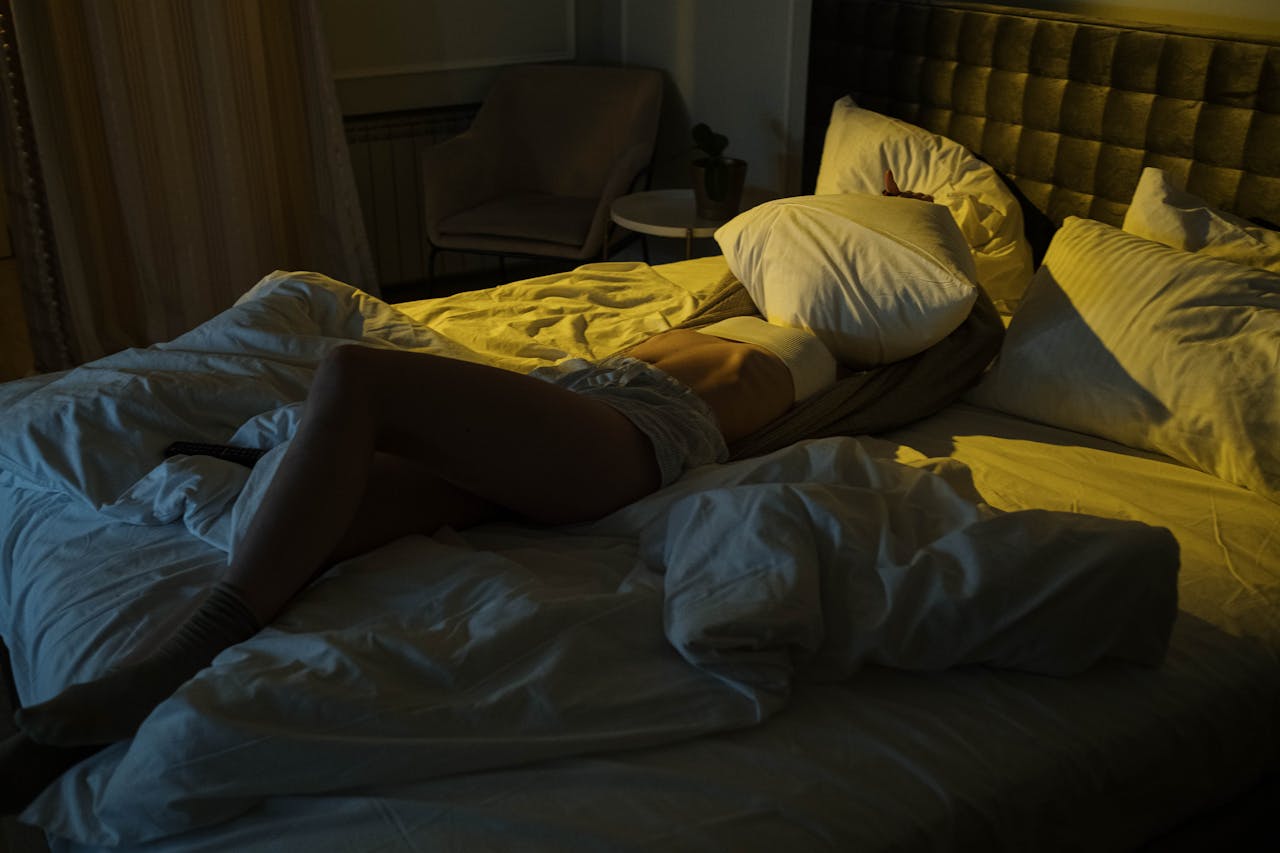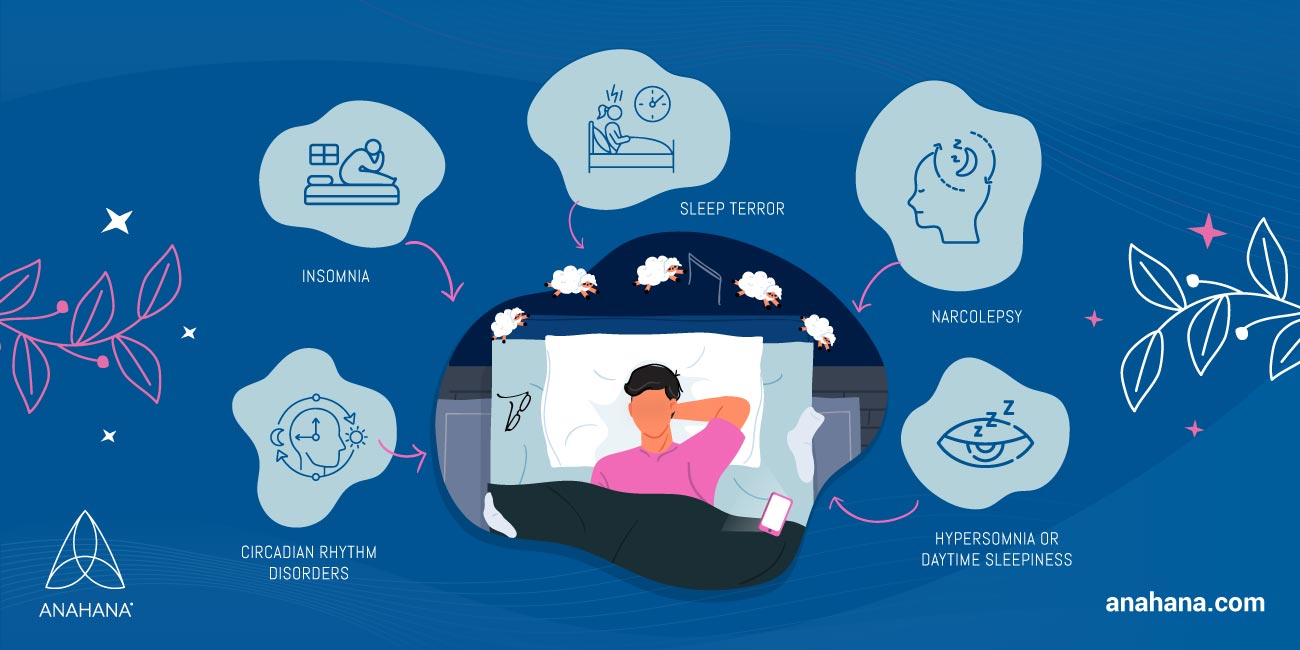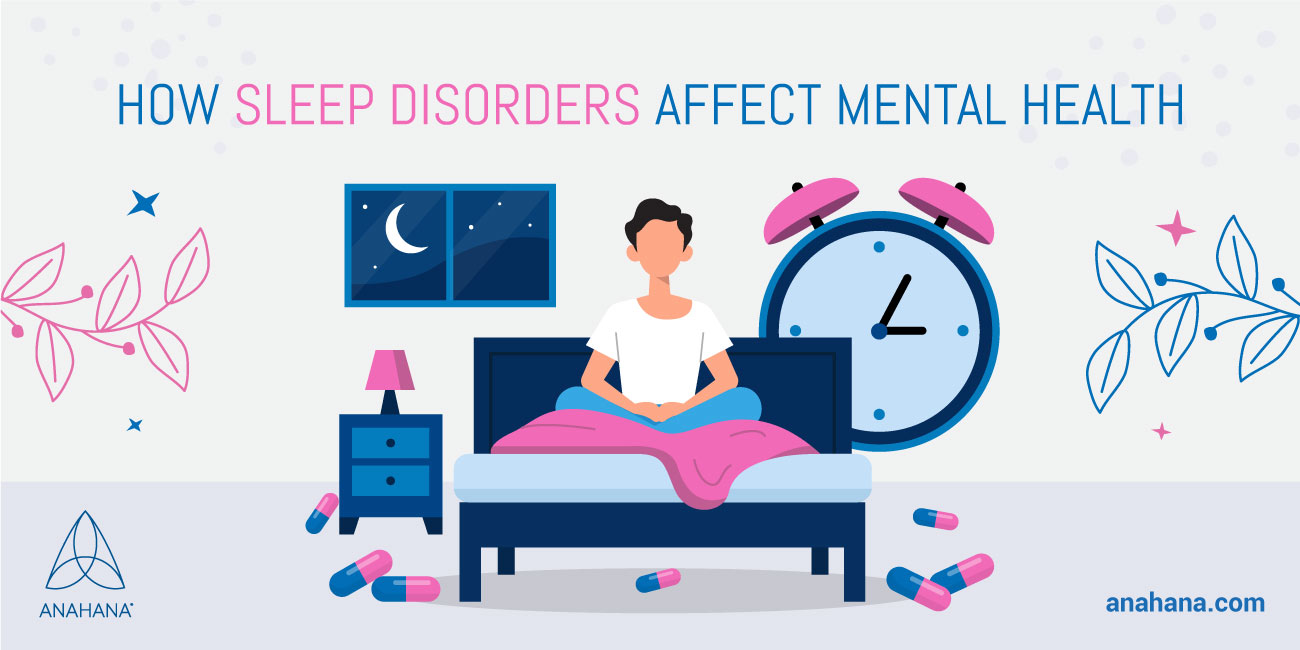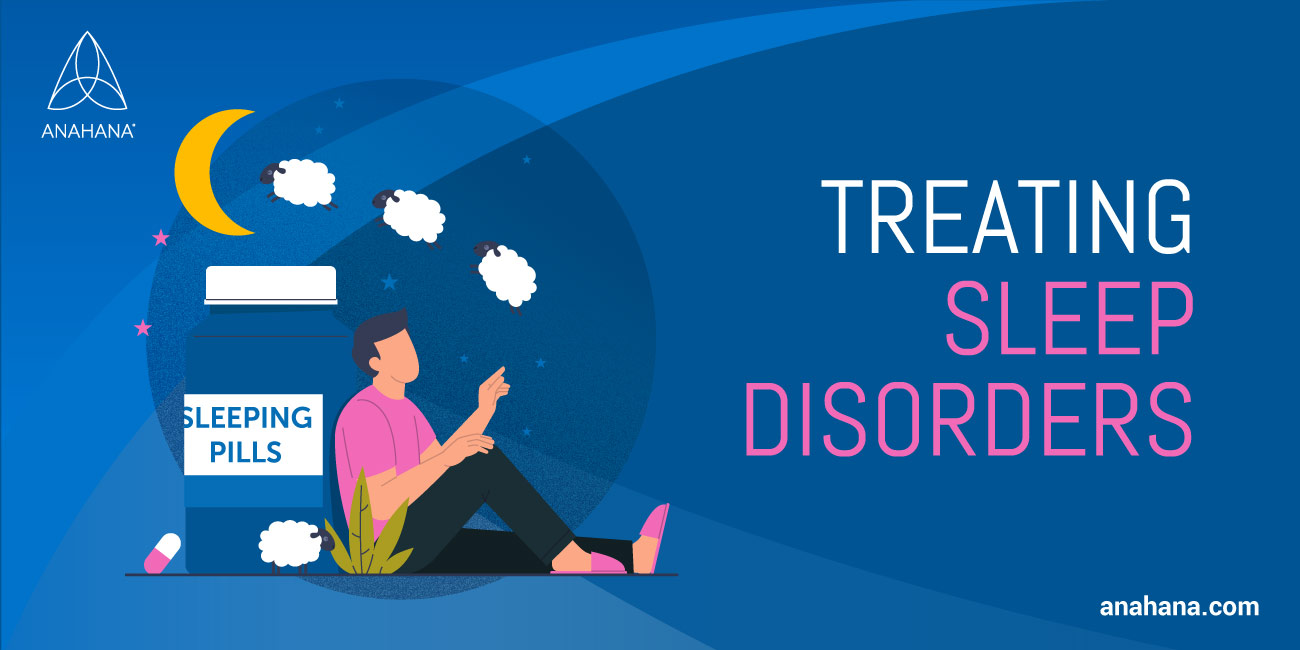
Table of Contents
Sleep disorder is an umbrella term that constitutes various health conditions that change a person’s sleeping patterns. There are many types of sleep disorders, each presenting with different signs and symptoms. Sleep disorders may affect one’s physical, mental, and emotional health as well as an individual's overall quality of life.
Key Takeaways
- Definition: Sleep disorders are conditions that affect sleep patterns, impacting overall health.
- Types: Includes insomnia, sleep apnea, restless legs syndrome, and narcolepsy.
- Symptoms: Difficulty falling asleep, staying asleep, excessive daytime sleepiness, and abnormal breathing patterns.
- Causes: Stress, lifestyle factors, medical conditions, and genetics.
- Treatments: Lifestyle changes, cognitive-behavioral therapy, medication, and use of devices like CPAP machines.
- Importance: Addressing sleep disorders is crucial for preventing health issues like heart disease and diabetes.
Sleep is the physical process by which the body and mind are in a state of complete rest; a lack of physical mobility occurs, as well as slow eye movements, reduced response to external stimulation, impaired cognitive function, and a reversible unconscious state. Although it is unclear why sleep is necessary, research shows that this process allows the body and the mind to accomplish many functions, such as physical restoration, learning, and memory consolidation.
The Importance of Sleep
A lack of sleep has proven to cause many short- and long-term issues. Humans sleep for about a third of their lifetimes. Therefore, it is important to underline the importance of having good quality sleep to avoid adverse effects. Short-term consequences of poor sleep include memory issues, trouble thinking clearly, impaired attention and concentration, impaired quality of life, increased absenteeism rates, reduced productivity, and increased risk for accidents at work, home, or on the road.
Longer amounts of time with poor sleep lead to sleep deprivation, resulting in increased morbidity and mortality, coronary artery disease, heart failure, high blood pressure, obesity, type two diabetes mellitus, stroke memory impairment, and depression can occur when an individual is deprived of sleep. Sleep disorders can greatly impact the quality of life and family life.
The Circadian Rhythm
Humans possess an internal biological clock that regulates the sleep and wake-up process. This process establishes what is called the circadian rhythm. This cycle has a daily rhythm that repeats itself over a span of about 24 hours. An area in the brain controls this sleep-wakefulness rhythm called the hypothalamus, which regulates certain physiological functions to promote sleep and waking behavior. The proper functioning of this cycle leads to restful sleep and normal sleep patterns.
The circadian rhythm, although internally controlled, is also influenced by external environmental factors such as time cues and light. A change in these external factors, such as a time change or working a night shift, can cause misalignment and may lead to certain sleep issues.
Once in a state of sleep, the human body passes through two different sleep phases. The first is rapid eye movement (REM), which consists of a lighter and less restful sleep stage. In REM, the body's muscles are all still, except for the eyes and breathing muscles, which remain active, hence the name “rapid eye movement.” This stage is commonly identified as the “dreaming stage” since most dreams and nightmares happen during the individual's sleep stage. This part of the cycle is typically short and becomes longer as the night goes on.
The second phase, called non-rapid eye movement sleep (NREM), can be subdivided into 3 separate stages. NREM is the stage in which the individual spends most of their sleep; the NREM cycles through light sleep, deeper sleep, and deepest sleep.
Types of Sleep Disorders

Circadian Rhythm Disorders
The circadian rhythm is what regulates our sleep-wake cycle. Any issues with this cycle or changes in external factors can cause disorders. Sleep typically overcomes an individual hours after the hypothalamus secretes melatonin (a sleep hormone that causes tiredness).
Phase Disorders
The circadian rhythm, or the sleep-wake cycle, typically follows a 24-hour clock. Some instances cause the human sleep cycle falls short or just over 24 hours. This causes the individual’s circadian rhythm to be pushed progressively earlier or later than the norm. This constant pushback can substantially misalign the circadian rhythm, causing one to follow a different sleep schedule than the rest. This is frequent in blind individuals due to no light-dark cues.
In some cases, the melatonin secretion process may occur too late compared to society’s scheduled sleep times. This results in what is called delayed sleep-wake phase disorder. This condition does not cause poor sleep quality or negative symptoms; it typically delays sleep by a certain length. The individual still wakes up feeling refreshed and well-rested but will fall asleep later than the norm. Due to its small number of symptoms, it is often undiagnosed or misdiagnosed for disorders such as insomnia.
On the other hand, the sleep process may occur too early in relation to the normal sleep time for a human being, causing advanced sleep-wake phase disorder. This is the exact same thing as delayed sleep-wake phase disorder; however, it advances the sleep cycle by a certain amount of time.
Shift-work Sleep Disorder
One last circadian rhythm disorder is the shift work sleep disorder, which can be explained by its name: people who have jobs with alternating shifts are susceptible to developing this disorder because they intentionally follow a different sleep schedule. This causes symptoms similar to insomnia, such as difficulty sleeping at normal hours and excessive sleepiness during inappropriate hours.
Dyssomnias
Dyssomnias is a term that designates insomnia conditions and hypersomnias, including narcolepsy and idiopathic hypersomnia.
Insomnia
Insomnia is a disorder in which people experience difficulty falling asleep as well as staying asleep. People with this condition often complain of poor sleep quality, trouble falling asleep or late sleep onset, and waking up frequently in the middle of the night or early in the morning. This is a frustrating condition and causes other insomnia symptoms, such as excessive sleepiness during the day, cognitive issues that include memory and attention impairment, and mood disturbances. A prolonged presentation of this specific sleep disorder can cause chronic insomnia, resulting in long-term insomnia symptoms.
When analyzing the causes of this disorder, it is shown that people with insomnia have a more active brain cortex around the time of sleep onset and during REM sleep, causing them to feel more awake or have more disturbances during REM phases. This overactive cortex, alongside genetic, behavioral, cognitive, and emotional factors, contributes to insomnia.
Hypersomnia
Hypersomnia causes excessive daytime sleepiness even with adequate amounts of sleep at night, and longer sleep times than usual or necessary. Other underlying sleep disorders, head trauma, or idiopathy can cause hypersomnias. If the hypersomnia is without cause, then the person has idiopathic hypersomnia.
Parasomnias
Parasomnias are disorders that cause a person to have abnormal movements and behaviors during sleep or wakefulness periods of the night. Parasomnias are not as common as other sleep disorders and can often be misdiagnosed, sometimes mistaken for seizures due to the unusual movement patterns that these can present.
Some parasomnias include REM sleep behavior disorder. This is more commonly observed in older individuals and is described as the loss of REM sleep due to muscle loss and presents with unusual motor activities during sleep. When observed, these individuals present with violent movement and dream-enacting behavior, often resulting in self-inflicted injury or injury to others.
Pavor Nocturnus
Sleep terror, or Pavor Nocturnus, causes periods of intense autonomic and motor symptoms, like a scream, during the deepest phase of non-rapid eye movement sleep. This sleep disorder is very common between the ages of 5 and 7 years old, especially in children with a history of sleepwalking. These individuals wake up confused and inconsolable with no apparent cause.
Narcolepsy
Another less common parasomnia is narcolepsy, a disorder in which the person experiences excessive daytime sleepiness and feels the irresistible urge to fall asleep during inappropriate hours and circumstances, as well as unexplained and sudden muscle weakness. Many have called these episodes “sleep attacks” because they come suddenly and unpredictably. These sleep attacks can last between 20 and 30 minutes, and the person typically feels more refreshed when finished.
The circadian rhythm is typically easily defined by its sleep-wake stages. Conditions such as sleep paralysis can stretch these boundaries. It is a condition in which the individual is physically unable to move, either right after falling asleep or waking up. The person experiences physical paralysis while being completely conscious in their mind, often experiencing visual sleep related hallucinations and the impression that they are being suffocated.
A clinical mystery, this parasomnia is believed to result from a mixed state of consciousness. Hallucinations can often be frightening, leaving the person feeling scared and anxious.
Sleep-Related Breathing Disorders
Sleep related breathing disorders typically include obstructive sleep apnea, central sleep apnea, and sleep-related hypoventilation. Sleep apnea is another general term that englobes 3 types: obstructive sleep apnea, central sleep apnea, and central sleep apnea. All of these fall under the same general definition: a momentary breathing pause during sleep. Obstructive sleep apnea is produced when there is an obstruction of the upper airway during sleep, causing a pause in breathing for a minimum of 10 seconds. This can be seen as a physical issue, such as airway structure.
On the other hand, central sleep apnea is caused by a pause in airflow when a lack of effort to breathe occurs. This is considered a physiological issue stemming from the brain’s respiratory center. A combination of both types of sleep apnea is called complex sleep apnea.
This condition can go unnoticed for long amounts of time because symptoms are usually observed. An individual with this condition will experience snoring, choking or gasping, apnea episodes experienced by a partner in the bed, excessive fatigue during the day, and waking up with a headache.
This sleep disorder can be quite serious and can put an individual at risk for many serious conditions if left untreated. For example, hypertension, type 2 diabetes, and cardiovascular diseases can occur if left untreated.
Restless Leg Syndrome
Restless Leg syndrome is a condition in which an unpleasant sensation is present, causing the urge to move the legs constantly. Although it falls amongst the most common sleep disorders, this condition is often undiagnosed or misdiagnosed due to the symptoms being very subjective and difficult to describe and the lack of diagnostic testing.
Restless leg syndrome is a lifelong condition typically noticed at a younger age but often goes undiagnosed until later in life. Symptoms typically include a variety of sensations in the lower limbs, between the knee and ankle, such as tingling, aching, burning, and more. These sensations cause an insatiable urge to move the legs, hence “restless leg syndrome”.
This condition is considered a sleep disorder because the restlessness noted in these people most often occurs at the end of the day when the individual is attempting to fall asleep. This causes difficulty with falling asleep and can lead to sleep disturbances, a big reason these people usually seek medical attention.
Periodic Limb Movement Disorder
Although similar to restless leg syndrome, this disorder has distinct symptoms and different diagnoses and treatments. This condition causes the legs and arms to move during sleep. This condition often leads to daytime sleepiness and can often be caused by restless leg syndrome.
Sleep Disorders and Mental Health
 Sleep and mental health are very often interlinked. While often the result of mental health conditions, sleep disorders can also cause mental issues. It is common knowledge that a person who gets a bad night’s sleep can often be in a bad mood the next day.
Sleep and mental health are very often interlinked. While often the result of mental health conditions, sleep disorders can also cause mental issues. It is common knowledge that a person who gets a bad night’s sleep can often be in a bad mood the next day.
Sleep is often linked to mental health, showing a relationship with conditions such as depression, anxiety, bipolar disorder, and many more. These mental health conditions often make sleeping harder, leading to a sleep disorder. Sleep disorders like insomnia can make it extremely difficult to get restful sleep, resulting in the same mental health conditions mentioned previously.
The sleep cycle has been shown to impact the brain's capacity to process emotional information. The different brain activities present and shown during different stages of sleep each have a huge part in a person’s emotional health. Without enough of these brain waves and without spending enough time in these specific stages, people can develop mental health conditions. Not only this, but a chronic state of sleep deprivation has often shown the development of sleep-related psychosis, another mental health issue.
Sleep Disorders and Neurodegenerative Diseases
Many neurodegenerative diseases have commonly been associated with certain sleep disorders. REM sleep behavior disorder can be taken as an example; frequently seen in the elderly population and is common in individuals with Parkinson’s Disease, multiple system atrophy, diffuse Lewy-Body disease with dementia, corticobasal degeneration, olivopontocerebellar atrophy, progressive supranuclear palsy. The development of RBD in people with these neurological conditions can be attributed to the common theme of muscle loss or muscle modification experienced by the patients.
Diagnosis
Since underlying issues cause many sleep conditions, diagnosing sleep disorders often starts with finding the cause. If there is no underlying cause, the diagnosis is made by a physical exam and symptom-based diagnosis. When experiencing symptoms, it is a good idea to keep a sleep diary, writing down all symptoms and keeping track of the sleep pattern. This helps a lot with easy diagnosis.
Many sleep disorders require sleep studies, a process in which the person is observed while sleeping through various equipment. This tracks any unusual movement or noises, brain activity, and breathing activity. All of this permits the diagnosis of different sleep disorders like insomnia, sleep apnea, sleep paralysis, and more.
Treatment of Sleep Disorders
 While some can be difficult to treat, most sleep disorders are easily managed with the proper interventions. The first step in the treatment of sleep problems is to find the cause of it. Once the cause has been identified, this underlying issue can usually be treated. For example, someone suffering from an anxiety disorder and experiencing trouble sleeping will first need to be treated for the anxiety disorder.
While some can be difficult to treat, most sleep disorders are easily managed with the proper interventions. The first step in the treatment of sleep problems is to find the cause of it. Once the cause has been identified, this underlying issue can usually be treated. For example, someone suffering from an anxiety disorder and experiencing trouble sleeping will first need to be treated for the anxiety disorder.
Treatment of the underlying cause either fails to remove this cause or simply does not have any effect on the sleep disorder. The next step is to treat the sleep disorder using various interventions directly. Common treatments include cognitive behavioral therapy as a non-medicated treatment and many different types of sleep medicine, such as benzodiazepines, melatonin receptor agonists, antidepressants, antipsychotics, and many more.
Treatment is essential for more serious sleep conditions, such as sleep apnea. These people often need a CPAP machine, which helps deliver air through tubing into a mask that the individual wears overnight.
Many more treatments are available, all very different based on the disorder being treated. By sticking to the recommended treatments, one can still have good physical health and an overall positive well-being and quality of life without developing further consequences.
Consequences of Poor Quality Sleep
Sleep disorders have been studied thoroughly from many different angles, and it has been concluded that sleep deprivation, whether due to lifestyle or sleep disorders, has many short-term and long-term effects on a person’s physical and mental health. It is important to have a good sleep schedule, practice good hygiene and seek help if symptoms of a sleeping disorder arise to avoid complications.
Improving Sleep
The base for improving sleep starts with having good sleep habits that include:
- Being consistent by going to sleep and waking up at the same time every day.
- Making sure the sleep environment is dark and quiet.
- Removing any electronics from the bedroom.
- Avoiding the use of screens at least an hour before bedtime.
- Avoiding large meals, caffeine, and alcohol before bedtime as well as being physically active during the day.
These sleep habits are important when improving sleep. Implementing these habits can help avoid sleep disturbances and help with falling asleep and getting enough sleep. If symptoms of sleep disorders are present, it is important to seek help from a specialist to avoid developing co-morbidities and complications as well as to improve overall sleep quality.
Frequently Asked Questions
What is the most common sleep disorder?
Some of the most major or common sleep disorders include insomnia, narcolepsy, restless leg syndrome (RLS), and sleep apnea.
What is the most serious sleep disorder?
Sleep apnea can be considered the most serious sleep disorder. Due to it presenting an interruption of regular breathing or airway obstruction during sleep, this sleep disorder can cause major and serious health complications; it should be addressed by a healthcare provider as soon as symptoms arise.
How much sleep does an adult need?
The recommended amount of sleep per night varies based on the age group. For adults aged 18-60, 7 or more hours per night seems optimal. It is important to note that the quality of sleep is also important. To ensure optimal physical and overall health, getting good sleep every night and waking up feeling refreshed and well-rested is crucial.
References
https://www.ncbi.nlm.nih.gov/pmc/articles/PMC6707128/
https://journals.lww.com/ijmr/Abstract/2010/31020/Overview_of_sleep___sleep_disorders.4.aspx
https://www.ncbi.nlm.nih.gov/books/NBK526132/
https://www.sleepfoundation.org/
Disclaimer
The contents of this article are provided for informational purposes only and are not intended to substitute for professional medical advice, diagnosis, or treatment. It is always recommended to consult with a qualified healthcare provider before making any health-related changes or if you have any questions or concerns about your health. Anahana is not liable for any errors, omissions, or consequences that may occur from using the information provided.

By: Anahana
The Anahana team of researchers, writers, topic experts, and computer scientists come together worldwide to create educational and practical wellbeing articles, courses, and technology. Experienced professionals in mental and physical health, meditation, yoga, pilates, and many other fields collaborate to make complex topics easy to understand.
